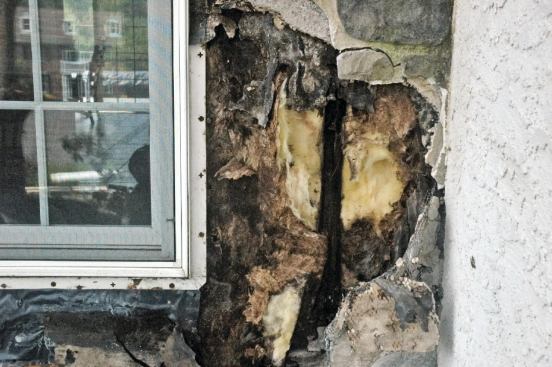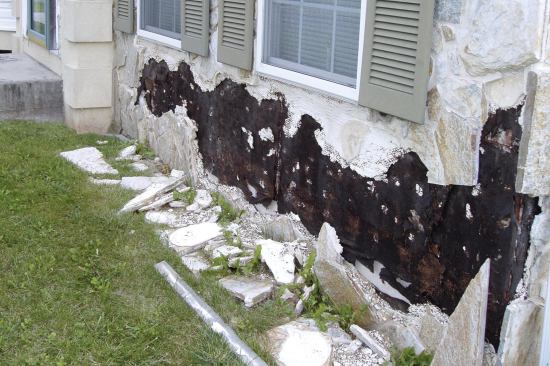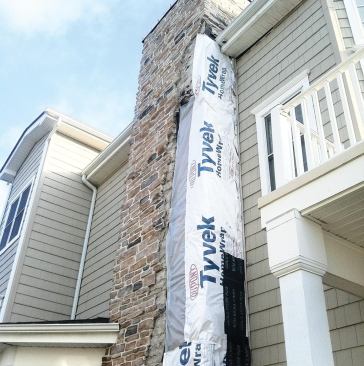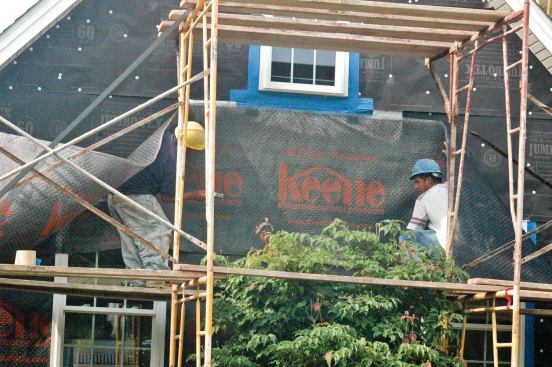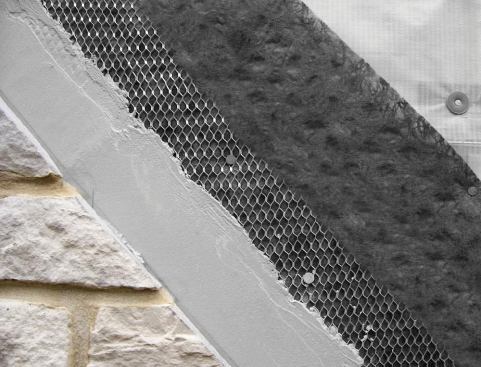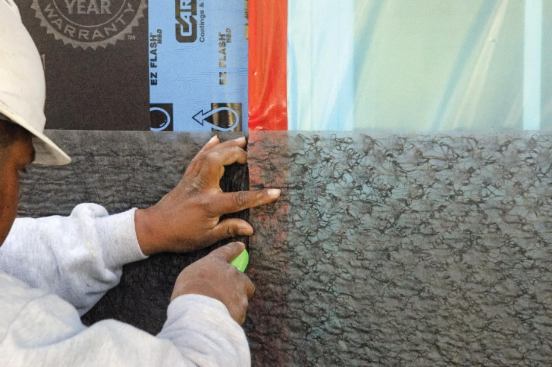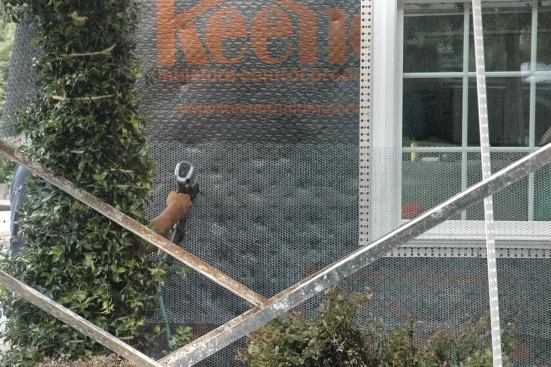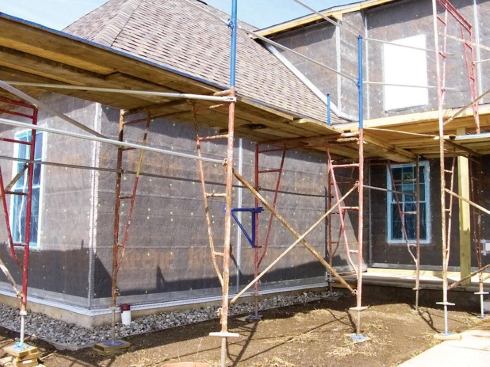Steve Long
The OSB sheathing and studs around the window on this home essen…
Over the more than 30 years I’ve worked in my family’s specialty masonry products business, I’ve often been asked to consult on moisture problems in wood-frame construction. Most of the damage I’ve seen is caused by substandard water-resistant barriers (WRB) and poor flashing details in stucco or adhered masonry veneer.
Although there have been gains made in the code to address these issues, I come across the same installation errors on new construction. One of the most common is to allow a single layer of building paper or housewrap to serve as the WRB. The results can be catastrophic: The OSB sheathing and studs around the window on this home essentially turned to compost within a few years. Another recipe for disaster is failing to install weep screeds at the wall base. Stone veneer and stucco are often run below grade for aesthetic reasons, and this practice can trap moisture in the wall assembly, either from above as it runs down behind the cladding, or from below as it wicks up from the ground. Without a weep screed — which provides both a capillary break and an escape route for excess moisture — rot is almost inevitable. In this case entire chunks of siding fell off the wall. Even more water can get behind the cladding when step and kick-out flashings at roof-to-wall and roof-to-chimney connections are improperly installed or missing.
Drainage mat. To avoid these moisture-related problems, many of the plaster and remediation contractors I work with install a drainage mat as part of their system. Rainscreen matting — typically a thin plastic matrix that water easily drains through — has been used for more than a decade in Canada and has become more common in my area over the past few years. Many contractors use it under wood-shingle and fiber-cement siding, but I think it’s particularly well-suited for stucco and stone veneer.
One of the products I represent is Keene Driwall Rainscreen .020-1, a 1/4-inch-thick plastic matrix laminated to a nonwoven vapor-permeable fabric. It works by reducing hydrostatic pressure: Bulk water in the exterior plaster is driven inward, where it hits the fabric and drains down the inside face and out the weep screed.
Installation. Keene .020-1 is applied over 60-minute Grade D building paper or an equivalent membrane — in lieu of the second layer of Grade D or equivalent required by code — with the fabric side out. The scratch coat adheres to the fabric and metal lath and is stopped from entering the matrix by the fabric, which provides a 1/4-inch-wide uninterrupted air space for drainage and ventilation. It’s easy to cut the membrane around penetrations like jambs and heads of windows and doors, and to wrap it around corners to allow an air space at the edge of the facade. Accessories like window casing beads and control joints go on top of the drainage mat; the weep screed is placed on the sheathing with the WRB lapped over it. Once the house is completely wired, it’s ready for plaster.
Cost. Keene .020-1 costs about 65 cents per square foot, with a 4-foot by 65-foot roll going for about $170. On average, it adds about 5% to the project cost for new construction and 2.5% for remediation work.
Steve Long owns E.R. Long Associates, a specialty masonry accessories company in Phoenixville, Pa.
